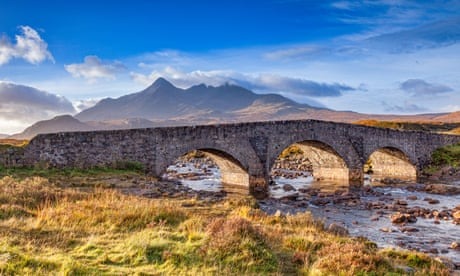
The plan is straightforward: a two-day trek with railway stations at both ends and an inn offering accommodations in between. Pack lightly, with only a change of clothes, a packed lunch, and water. I’m not seeking a circular route; I desire a direct hike through stunning landscapes, culminating in an evening by a cozy log fire and a selection of pristine real ale taps at the pub.
My partner Sophie insists on a relaxed approach. “We’re after the perfect weekend walk, not an SAS survival course,” she reminds me.
I discreetly set aside my notes, as the prospect of a 1,500-meter ascent seems out of the question.
“Let’s aim for a maximum of 12 miles per day,” she suggests. “We prefer gentle slopes and favorable weather.”
Finding the ideal location proves to be a bit of a challenge. Many of the UK’s rural railway lines sadly lack stations (there were once approximately 9,000 stations, but now barely a third remain). For instance, the York to Scarborough line is a prime example, with only two intermediate stations left along its beautiful 42-mile stretch, a stark reduction from its peak of 17.
However, while railway stations have been in decline, pubs have fared even worse. Statistics from the third quarter of 2022 show that the UK is witnessing the closure of about 50 pubs each month, reflecting a long-term trend. This is surprising, given the ample evidence that communities with a pub tend to thrive both economically and socially. So, if I can locate the right walk, it might contribute in a small way to supporting these vital rural establishments.
Ultimately, I opt for a railway line that has retained its stations, including a few “request stops.” The Heart of Wales line stretches 121 miles from Shrewsbury to Swansea, offering an impressive 32 departure points in between. Its continued existence is a testament to local determination and, perhaps, the fact that it traverses several closely contested parliamentary constituencies. There is even a footpath that intermittently follows the line, offering numerous weekend trip possibilities.
However, I decide to focus on the eastern end of the route to make it a practical weekend journey from many major British cities.
Starting our journey from Shrewsbury, we disembark the train at Craven Arms, a favorable starting point as it is situated on the Shropshire Way. This 200-mile trail forms a figure-eight with Shrewsbury at its heart, and we’re embarking on the southern loop. Under a persistent drizzle, we head westward from the town, following the distinctive “buzzard” trail markers across fields and ascending into Withins Wood, where an Iron Age hill fort can be found.
For a brief moment, the rain ceases, and a sudden burst of sunshine creates an enchanting mist among the trees. I mentally prepare myself, as these are the moments where the overused term “Tolkienesque” might come to mind, but thankfully, the rain returns, sparing us that cliché.
Soon, we catch a glimpse of the ethereal Clun Castle emerging through the clouds. The small town of Clun has held significance for centuries, serving as both a river crossing and an overnight halt for Welsh drovers en route to the bustling cities of Birmingham and London.
In the past, Clun boasted 14 pubs, but now it has only two, which is still more than most similarly sized British settlements, housing approximately 700 people. In ancient times, this was the realm of Eadric the Wild, who defied William the Conqueror and purportedly wed a supernatural enchantress he encountered in the nearby woods, presumably amidst a misty, Tolkien-esque atmosphere.
Notably, this history didn’t impress AE Housman, who described Clun as “the quietest place under the sun.” We concur, strolling along the main street without encountering anyone except a cheerful local who kindly directs us to the pub, pointing out the town’s remarkable collection of doorknockers.
We finally arrive, slightly damp from the rain, at the White Horse Inn, a welcoming and hospitable spot for our overnight stay.
The following morning, the rain has ceased, and we make our way across the 13th-century packhorse bridge and up to St. George’s Church, a substantial structure for a small town, featuring an intriguing graveyard. Playwright John Osborne rests here alongside his fifth wife, Helen (the former Observer arts critic). Returning along our route, we proceed to the castle, where remnants of its last military engagement, during Owain Glyndŵr’s siege in the early 1400s, include a few ruined stonework remnants on a mound and earthworks in the fields. Since then, not much seems to have occurred, although I imagine it gets livelier during the Green Man festival every August.
Resuming our journey on the Shropshire Way, we traverse open fields and begin ascending a lengthy, picturesque ridge toward the Welsh hills. The meadows are adorned with the vibrant hues of waxcap mushrooms, showcasing brilliant yellows and crimsons, while the trees in the hedgerows become progressively more weathered and twisted by the winds. This upland walk is truly spectacular, and it almost transports us back in time a few centuries, especially as we approach some rather ominous dark clouds. “I did request gentle slopes and fine weather,” Sophie remarks. “But I’m not complaining. I’m absolutely enjoying it.”



